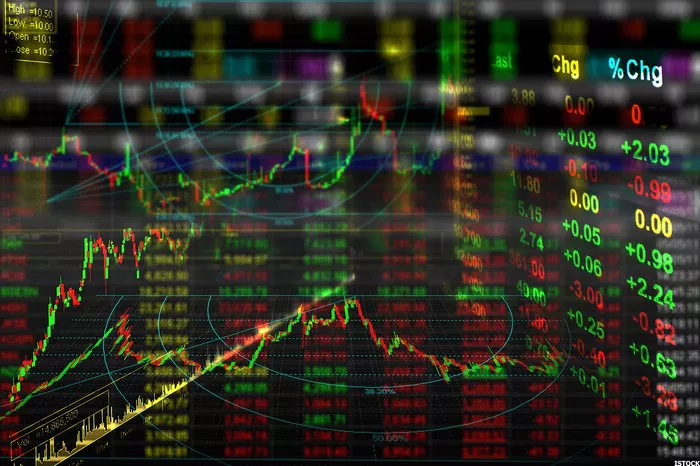Nasdaq futures are essential instruments for traders, investors, and financial analysts seeking insights into the expected performance of the Nasdaq Composite Index. These futures contracts offer a glimpse into the market sentiment and expectations for the technology-heavy index.
1. Understanding Nasdaq Futures
Nasdaq futures are financial contracts that allow market participants to speculate on the future value of the Nasdaq Composite Index. These futures are traded on various futures exchanges and serve as a tool for hedging, risk management, and making directional bets on the Nasdaq’s performance.
Nasdaq futures offer traders exposure to the entire Nasdaq Composite Index, which includes a wide range of technology, internet, and biotechnology companies.
These futures contracts have become increasingly popular due to the growth of the technology sector and the prominence of companies listed on the Nasdaq.
2. Accessing Nasdaq Futures Data
To access Nasdaq futures data for tomorrow, traders and investors can utilize a variety of platforms and sources:
Futures Exchanges: The most direct source for Nasdaq futures data is the futures exchange where they are traded. The Chicago Mercantile Exchange (CME) is one of the primary venues for trading E-mini Nasdaq 100 futures contracts.
Financial News Websites: Reputable financial news websites like Bloomberg, CNBC, Reuters, and Yahoo Finance provide real-time coverage of Nasdaq futures. Their websites often feature dedicated sections for tracking major market indices.
Online Brokerage Platforms: Many online brokerage platforms, including E*TRADE, TD Ameritrade, and Fidelity, offer real-time quotes and charts for Nasdaq futures. These platforms are especially convenient for traders who manage their portfolios through these brokerages.
Stock Market Apps: Mobile apps like Investing.com, StockTwits, and Seeking Alpha offer real-time Nasdaq futures data. These apps often include customizable watchlists and technical analysis tools.
3. Influential Factors for Nasdaq Futures
The movement of Nasdaq futures is influenced by a variety of factors that traders and investors should consider when forecasting tomorrow’s market outlook:
Technology Earnings: Earnings reports from technology giants like Apple, Amazon, Microsoft, and Google’s parent company, Alphabet, significantly impact the Nasdaq. Positive or negative earnings surprises can lead to substantial movements in Nasdaq futures.
Economic Data: Economic indicators such as GDP growth, employment figures, and consumer sentiment can affect Nasdaq futures. Strong economic data may boost technology stocks and Nasdaq futures.
Interest Rates: Changes in interest rates can have a notable impact on technology stocks. Rising interest rates may lead to lower valuations for growth companies, potentially affecting Nasdaq futures.
Global Events: Geopolitical developments, trade tensions, and international economic events can influence Nasdaq futures. Traders should stay informed about global news and their potential impact on technology stocks.
Market Sentiment: Market sentiment, which can be bullish (optimistic) or bearish (pessimistic), plays a crucial role in Nasdaq futures movements. Traders often gauge sentiment through news headlines and social media.
4. Implications for Tomorrow’s Trading Day
A close examination of Nasdaq futures can provide insights into tomorrow’s trading day:
Bullish Outlook: Rising Nasdaq futures indicate optimism about the Nasdaq Composite Index’s performance for tomorrow. This could suggest expectations of higher technology stock prices during regular trading hours.
Bearish Outlook: Falling Nasdaq futures suggest pessimism and uncertainty. This might indicate concerns about potential declines in technology stock prices on the upcoming trading day.
Volatility: High levels of volatility in Nasdaq futures can result in erratic price movements during tomorrow’s trading session. Traders should be prepared for the possibility of rapid price swings.
5. Trading Strategies and Risk Management
Traders employ various strategies when trading Nasdaq futures:
Day Trading: Day traders aim to profit from intraday price movements in Nasdaq futures. They typically close their positions by the end of the trading day to avoid overnight risk.
Swing Trading: Swing traders hold positions for several days or weeks, capitalizing on medium-term price trends in Nasdaq futures.
Hedging: Investors can use Nasdaq futures to hedge existing technology stock portfolios. By taking positions that move in the opposite direction of their holdings, they can protect themselves from potential losses.
Risk management is crucial when trading Nasdaq futures due to their potential for volatility. Traders should set stop-loss orders to limit potential losses and avoid overleveraging their positions.
Conclusion
Nasdaq futures are valuable tools for forecasting the performance of the Nasdaq Composite Index and providing insights into tomorrow’s market outlook. Accessible through various platforms and sources, Nasdaq futures data is readily available to traders, investors, and analysts. Understanding the influential factors, implications for tomorrow’s trading day, and trading strategies associated with Nasdaq futures empowers market participants to make informed decisions in the dynamic landscape of technology stocks and the broader financial markets.


